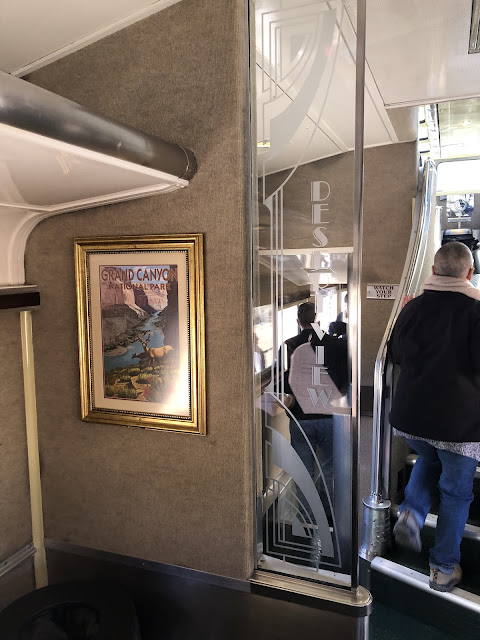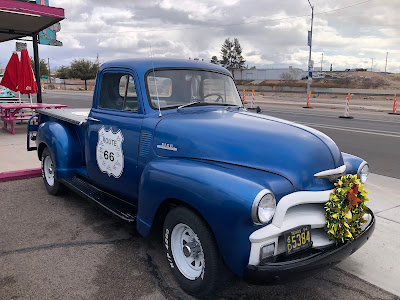No, not lighting the large Q on the side of Q mountain here in Quartzsite, lighting my BBQ. A lot of towns in this part of Arizona have the first letter of the town name formed by white rocks on the side of a nearby hill. Quartzsite is no different. Q mountain is close to town and the large Q sits prominently. It is only visible during the day and is not lit. This post is another in the cooking series and is about one of my favourite methods - barbecue.
The Early Years
When my parents immigrated to Canada in 1966 they immediately set out to try all things Canadian. We went up to Algonquin Park to try roughing it in a cabin, trying out a canoe and hoping to see a moose on the shoreline. We went on day trips to the beaches of Niagara on The Lake and darn near froze in the water, went on a lot of Sunday drives to see the countryside and generally tried to enjoy the various things Canada has to offer. My Mum and Dad were big into picnics and so also wanted to try out a new-to-them picnic idea - barbeque. The first few attempts were on those rusted cast iron grills on a pole that seem to still be hanging on in various parks, but never seem to be used. Goodness knows who cooked what on them but they are not very appealing.

After realizing those would not work my Dad bought a hibachi. The kind that folds into itself and is portable to put in the car. During those early days I cannot remember if anyone used real charcoal all that much, but I remember my Dad used those pressed briquettes that were self lighting. I suppose they did the job but always had a certain smell to them that I am not sure was good for the meat it was cooking or for us to inhale. I would recognize that smell today. They seemed to take forever to light off and get an even heat, and when they reached their peak they seemed to be only a few minutes away from being spent. In any event they seemed to do well for hot dogs and hamburgers, which were also new to us.
By the time the early seventies came along my Dad had gone through a number of hibachi’s and found the kettle style barbeques were better, for home use anyway. He bought his one and only Weber Kettle in 1975 and used that every summer until they moved into a condo in the late 90’s. When they moved they wanted to know if any of the three kids wanted anything they were otherwise going to get rid of. I snatched up the bbq and have been using it every summer since. Believe it or not, it is the original bowl, lid and legs. The only things that have been replaced are the metal racks inside and the air vent controller at the bottom of the bowl. Pretty good for an appliance that is stored outside all summer with no cover and will celebrate 50 years of service this year.
 |
| Sausage and dogs |
I have come to really enjoy charcoal grilling. I love the flavour and nuance of cooking meats, fish, vegetables and even pizza over various types of hardwood charcoal and smoking chips. I will start to write some posts about the various go-to meals I love to do and hopefully you will find them interesting. As I said in my Sharp Tastes entry from a few weeks ago we are not foodies, but really enjoy what cooking brings to the table in terms of family, fun and good food. Trying to find new ways of cooking something on the grill can be a challenge sometimes, but the flavour is almost always second to none, so worth the effort.
All summer when we are at our property we use our bbq just about every day. In the winter we travel so pack it away in the shed until the next summer. For travelling I purchased a Kamado style barbeque and use it regularly. We used to have a full blown kamado style bbq from Canadian Tire but the darn thing weighed 150 pounds so there was no way it was going to be carried in a trailer. So, I bought a Kamado Joe Jr. It is 75 pounds so still heavy, but Pat agreed to get rid of some of her books to offset the weight and now we can take it with us wherever we go.
 |
| Smokin Joe |
Charcoal, Chips and Chunks
The base for a good barbeque is in the charcoal. I mentioned earlier, you can use charcoal briquettes but whatever chemical they put in there to form the briquette leaves a taste in my opinion so Hardwood Lump Charcoal is the only type I will use. There are some good varieties out there, but you have to be careful because there are also some that put charcoal ‘sticks’ in their mix and even rocks from the charcoal preparation process. I steer away from the commercial brands that also sell barbeques as they tend to be overpriced and really are designed for their large units so the chunks are huge. The Kamado Joe Jr has a 13.5” cooking surface so the charcoal bowl is not that large for big chunk charcoal.
Home Hardware sells a really good charcoal from Quebec with Maple and Oak if you are lucky to find some, and specialty bbq places usually have good quality charcoal as well. When we got to the US last November I wanted to see what their charcoal was like so purchased a 20 pound bag of charcoal with oak and a ten pound bag of mesquite. I am not sure what the charcoal consists of to have them say ‘with oak’ but it is not that bad. The mesquite was expensive but I have found using one or two pieces mixed in with the oak is the way to go.
The use of flavoured chips or chunks is purely optional if you have quality charcoal, and with a really good oak or maple charcoal I don’t typically use either. However, there are some recipes I have where their use really lends a nice flavour. I use two different types of chips and chunks depending on what I am cooking: one is a light flavoured wood like pecan, alder, cherry, or apple, while the other tends to be heavier in flavour like mesquite or hickory.
There is an ongoing debate about whether to soak or not. I have found there are pros and cons to each, but prefer to soak before putting them on the coals. The kamado style bbq’s retain heat extremely well in the ceramic lining so for the few seconds you open the lid the temperature does not drop that quickly. Putting dry chips or chunks onto 350 degree coals will almost instantly light them off. If they have been soaked first they tend to release the smoke slower.
If I am doing a long slow cook at less than 200 degrees I will typically use chunks; otherwise, for a steak or something that is on and off in ten minutes or so I will use chips.
Thanks for reading. Next up Fishing in the Desert.




















































